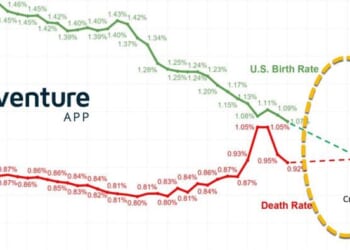
The Halo video game, The Lord of the Rings, medieval knights, The Patriot, and of course, phallic jokes. Such a list would be fairly representative of the cultural and entertainment consumption of your average teen to college-aged young man, especially someone of a right-leaning political bent.
It’s also a sampling of the social media content—mostly in meme form—distributed by the Department Homeland Security’s (DHS) accounts in recent weeks.
President Donald Trump’s return to the White House has ushered in a government communication and media strategy that is entirely in the image of Trump: unrestrained and unconcerned with the norms or bounds of accepted political speech. While the work of any administration’s press offices has always relied on plenty of spin, the messaging from the second Trump administration seems less in the vein of political communication than information warfare.
This communication strategy has played out across the administration, from the “new media” faces in the White House briefing room, to the Pentagon’s media restrictions, to the Federal Communications Commission and Trump’s campaign against news broadcasters.
DHS, along with the White House, have been the most aggressive in the online part of this effort, particularly as the administration’s deportation campaign has expanded. What’s most striking about the effort is not just the trollish and at times juvenile tone of official government communications. It’s also an explicitly nativist message—much of it marketed to new recruits DHS is seeking to bring on—that the agency’s work is crucial to reversing “cultural decay” and protecting “American identity.”
The White House and DHS social media accounts have put out a flood of memes and content directed toward and in the style of the very online right. Many of them are fawning meme-fications of Trump, others are simply odd, but many center around the administration’s deportation efforts including a video labeled “ASMR: Illegal Alien Deportation Flight,” which featured a montage of people being put in chains and boarding a plane—Autonomous Sensory Meridian Response (ASMR) videos are a popular online genre that typically consist of soothing or therapeutic audio and visuals.
The memes that DHS has been using to promote recruitment consistently touch on the theme of invaders threatening civilization or the homeland. The Lord of the Rings post included quotes from one of the films, “We come to it at last, the great battle of our time” and an image of one of the Hobbit characters, with the line “there won’t be a shire, pippin” and an Immigration and Customs Enforcement (ICE) recruitment page URL. The post featuring knights reads, “the enemies are at the gates.” The Halo post included a picture from the game with the line “destroy the flood,” a reference to a key plot in the game involving the eradication of a parasitic alien species; some of the game’s designers said the post made them sick.
The department has also posted a slew of highly edited videos of ICE operators using music and audio overlays from movies like The Batman or Fury—some of which have run afoul of copyright restrictions. Many posts simply regurgitate memes of the day, but some recall a nostalgic and whitewashed vision of America’s past using historic artwork depicting settlers and manifest destiny. “Pioneers, not illegals,” reads one post. Others repurpose war propaganda posters. Selections of Norman Rockwell paintings are a mainstay on the DHS feed, though the Rockwell family wrote an op-ed this month decrying the administration’s appropriation of the imagery.
The communications strategy is a stark departure from the activity of official accounts during the first Trump administration, which followed the typical playbook of pushing out typically anodyne updates on agency work. The goal now doesn’t seem to be conveying information as much as garnering attention, a former senior official from the first Trump administration who is familiar with DHS told The Dispatch. This former official suggested that the messaging strategy is likely directed more at the president than anyone else.
The modus operandi of the communications effort is embodied in a poster the White House displayed on the lawn earlier this year that read, ‘oMg, diD tHe wHiTE hOuSE reALLy PosT tHis?’
“Our meme-heavy, content-first strategy was aligned with the president’s priorities. Digital was not a sideshow,” Billy McLaughlin, the White House director of digital content who left the administration this summer, wrote in an op-ed. “It was a frontline tool for shaping narratives, building momentum, and applying pressure.”
Where the casual observer might dismiss the administration’s posts as simple trolling of its critics, McLaughlin argues there’s a well-thought-out strategy. “Whether it was an ASMR-style video of deportations, a Jedi Trump with a bicep vein battling the deep state, or a surreal ‘Make It Rain’ Gemini AI-generated storm of cash over the White House, every post had intention,” he added. “Every choice matched the cultural moment.”
The memes have the added advantage of turning the media and scrutiny of the content into scolds, providing more conflict fodder for the online right with the sheen of subversiveness. The 4Chan-esque edginess is something of a Rorschach test—audiences supportive of the administration eat it up while others view it as weird or sad or offensive.
Immigration law enforcement messaging has traditionally focused on the importance of protecting U.S. citizens and targeting violent criminals, traffickers, and terrorists who are in the country illegally. John Sandweg, a former acting director of ICE during the Obama administration, told The Dispatch that the agency’s recruitment efforts in the past centered around a call to public service to ensure public safety and national security.
DHS accounts have certainly focused on that messaging too, highlighting violent criminals that have been arrested and deported. But under the second Trump administration, DHS has added another emphasis: protecting American culture and identity.
Through memes, but more explicitly in public statements and announcements, the agency is presenting DHS’s mission as being not just about securing the border or even finding and deporting “the worst of the worst,” but also preserving and reconstituting a certain view of American culture and identity. And this focus is part of the messaging in the agency’s large-scale recruiting effort to hire thousands of new people, including 10,000 additional ICE officers.
DHS puts out weekly videos about its work, many of them presented by Micah Bock, its deputy assistant secretary for strategic communications. “Equally important as the task of securing our borders is the task of defending our culture and what it means to be an American,” Bock said in a video last month calling for applicants to join United States Citizenship and Immigration Services (USCIS). “We know what it means to be an American, everyone knows what an American is. And how we are seeking to empower each of you is to make the decisions that will determine what our country looks like for decades to come. You’ll block communists, terrorists, and globalists who dilute our culture and import their failed ideologies.”
“Your vigilance will stop foreign influence from poisoning our elections, our schools, and our churches,” he added. “This is the most tangible way you can shape the future of our nation.”
In another announcement from last month, Bock said, “DHS was created to defend our homeland and secure the promises our founders left this nation almost 250 years ago. This sacred task extends inward from our borders and into our communities as we seek to shape and secure our nation and culture from foreign threats.”
The videos pitch the department’s work not just as law enforcement but as a way to mold culture. “For years our borders were open and Americans watched as our law-abiding society, culture, and heritage were pillaged by a horde of illegal aliens. Now we are reversing the tide, safe-guarding our culture and shared values,” Bock said in a September message.
In another October update, the agency raised the age-old stereotype of foreigners preying on a community’s women: “Millions of criminal illegal aliens held our cities hostage, and our communities at gunpoint, while our wives and daughters faced devastating physical abuse at the hands of these invaders.” The updates have also referenced the idea of so-called “heritage Americans,” a somewhat flexible concept embraced by some racialists and nativists online that descendants of America’s Anglo-Protestant European settlers era hold the primary claim to American identity and citizenship. “For heritage Americans, President Trump’s DHS is a steadfast defender of our birthright,” Bock said in September. “This administration will stand with the descendants of America’s pioneers, its workers, and its warriors, ensuring our nation remains a beacon of strength and freedom for those who rightfully call it home.”
Historians have highlighted how closely the messaging has aligned with the language of nativist movements in American history, including the 1850s and the early 20th century. Tyler Anbinder, a historian at George Washington University who specializes in American immigration and nativism, told The Dispatch that the language DHS is using mirrors the nativist slogans of the past, including some now-infamous cartoons from the late 19th and early 20th century. “They precisely match the rhetoric that’s being used today,” he said.
“The same language was used, ‘protect America’s culture,’” Andbinder added. “It was often not exactly defined, but sometimes it was defined as keeping America white; that was also part of the undercurrent of this ‘protect American culture.’”
He also said that aesthetics and imagery DHS has been promoting is “alarmingly similar to the nativist aesthetic of the past.” Many of the social media accounts that promote DHS’s messaging also appear to take inspiration from the symbols of early nativist eras, including the Know Nothing party flag.
DHS has rejected any criticisms of its social media, with Assistant Secretary for Public Affairs Tricia McLaughlin attacking the media for focusing on the memes and imagery rather than the department’s other communications about immigration enforcement action and deportations of criminals. The department has also said it’s trying to reach online audiences directly, through whatever humor or cultural content necessary, so that “the media can no longer throttle the truth.” DHS did not respond to The Dispatch’s requests for comment on the cultural and identity messaging other than to say the questions were part of a “boring and tired narrative.”
But the recruitment message isn’t simply a media obsession, it’s getting rave reviews from nativists and white supremacists, with many of them directing their followers and supporters to join up. The Proud Boys’ New Jersey chapter posted a screenshot of a DHS deportation meme, writing, “Before too many people shame this recruitment ad for being unprofessional, understand that an ad like this attracts exactly the type of men ICE needs.”
Nathan Halberstadt, a right-wing writer who holds anti-immigrant and nativist views, has promoted DHS and ICE recruitment. “Remigration, or sending them all back, is the most important thing we can accomplish politically,” he said on a podcast last month, calling for people to join ICE.
C. Jay Engel is another right-wing writer who has embraced the DHS cultural message. Engel is a nativist who describes himself as a heritage American descended from America’s European settlers—he also insists that same heritage makes him a “Native American.”
Bock, the DHS spokesman, follows Engel on his personal X account, and DHS has apparently pulled content from Engel. “All my most right wing twitter anon friends should flood the zone on this because there’s no one I trust more to make these very important decisions,” Engle wrote last month, reposting a USCIS recruitment ad.
For its part, the department has credited the messaging for generating historic numbers of incoming job applications. DHS announced Thursday that it has received a record 35,000 applications for “Homeland Defender” jobs at USCIS—the role is responsible for determining eligibility for green cards, visas, and citizenship and was previously titled Immigration Services Officer. DHS Secretary Kristi Noem said Friday that ICE has received 200,000 job applications, and the agency said in September it has already issued 18,000 tentative job offers. The agency is looking to bring on 10,000 new deportation officers by January, nearly double the 6,000 officers the agency had before the push. But DHS has struggled in the past to fill roles, with many recruits dropping out of hiring and training the process.
The rush to hire and push into the field such a large number of new recruits has reportedly resulted in candidates going into training without vetting or background checks. The interview process for ICE officers has reportedly been cut, the age caps have been eliminated, and the minimum age to apply has been lowered to 18. Training for new deportation officers has been cut from four to two months with Spanish-language courses being a casualty of the reduction.
“When you combine this [messaging] with what appears to be really rushed and incredibly limited vetting and background checks, the bigger concern here is you’re getting people who have an agenda, who are just anti-migration,” Sandweg, the former ICE director, told The Dispatch.
He stressed that ICE is a law enforcement agency crucial for public safety, including through its work deporting bad actors, but that recruiting a wave of unqualified candidates or people who are motivated by an anti-immigrant agenda could be detrimental to ICE’s work.
“This idea that you’re taking individuals who are not motivated for the right reasons, who harbor a grudge against immigrants, you give them incredible power, and you don’t give them proper training, and you’re not doing a proper background check,” he added, “It’s just going to lead to potentially catastrophic results.”
















